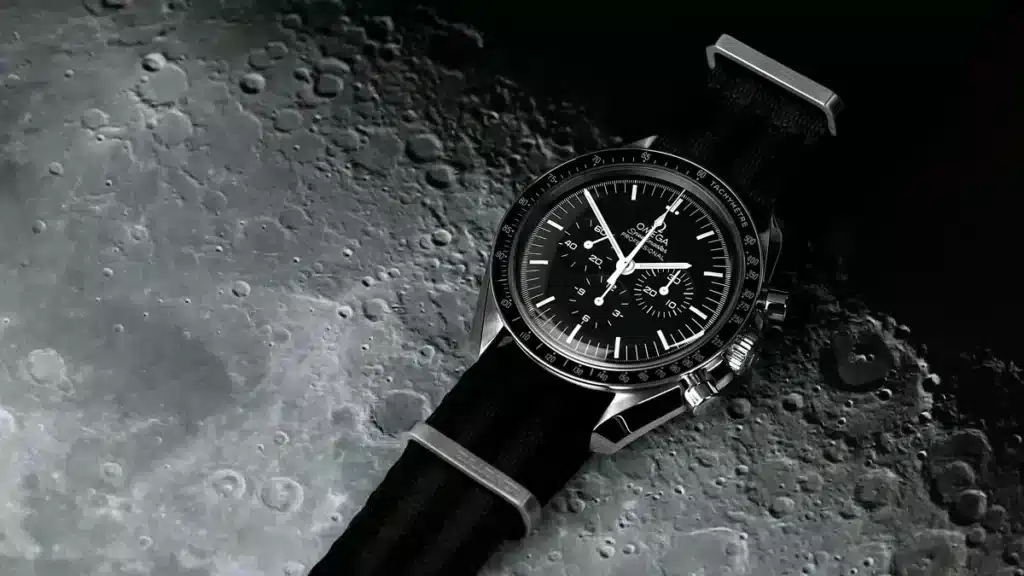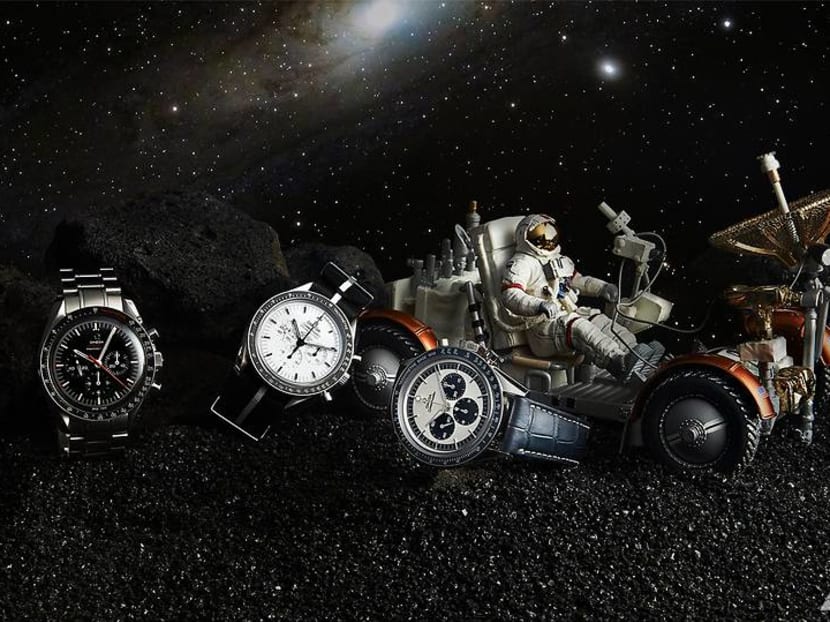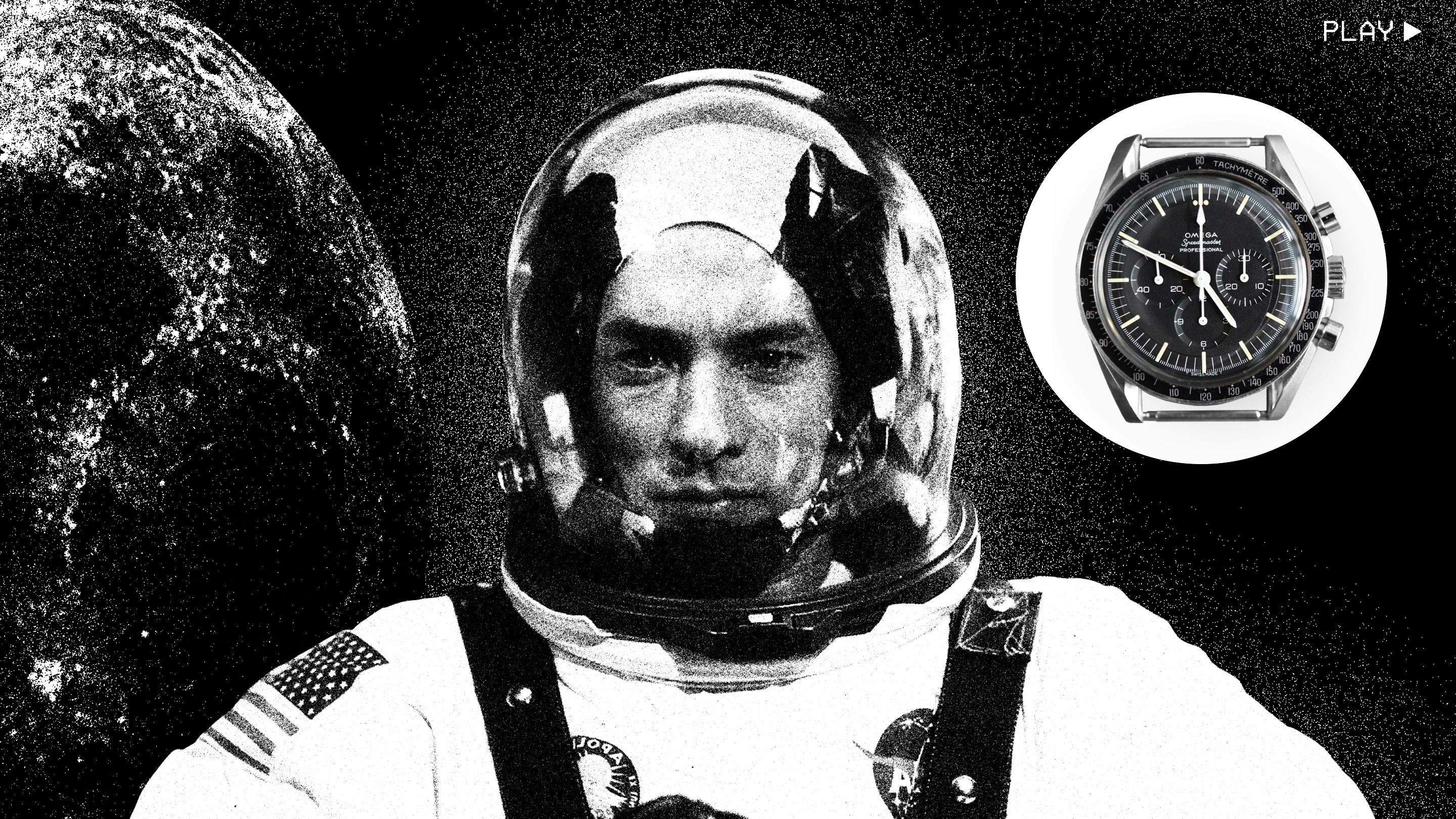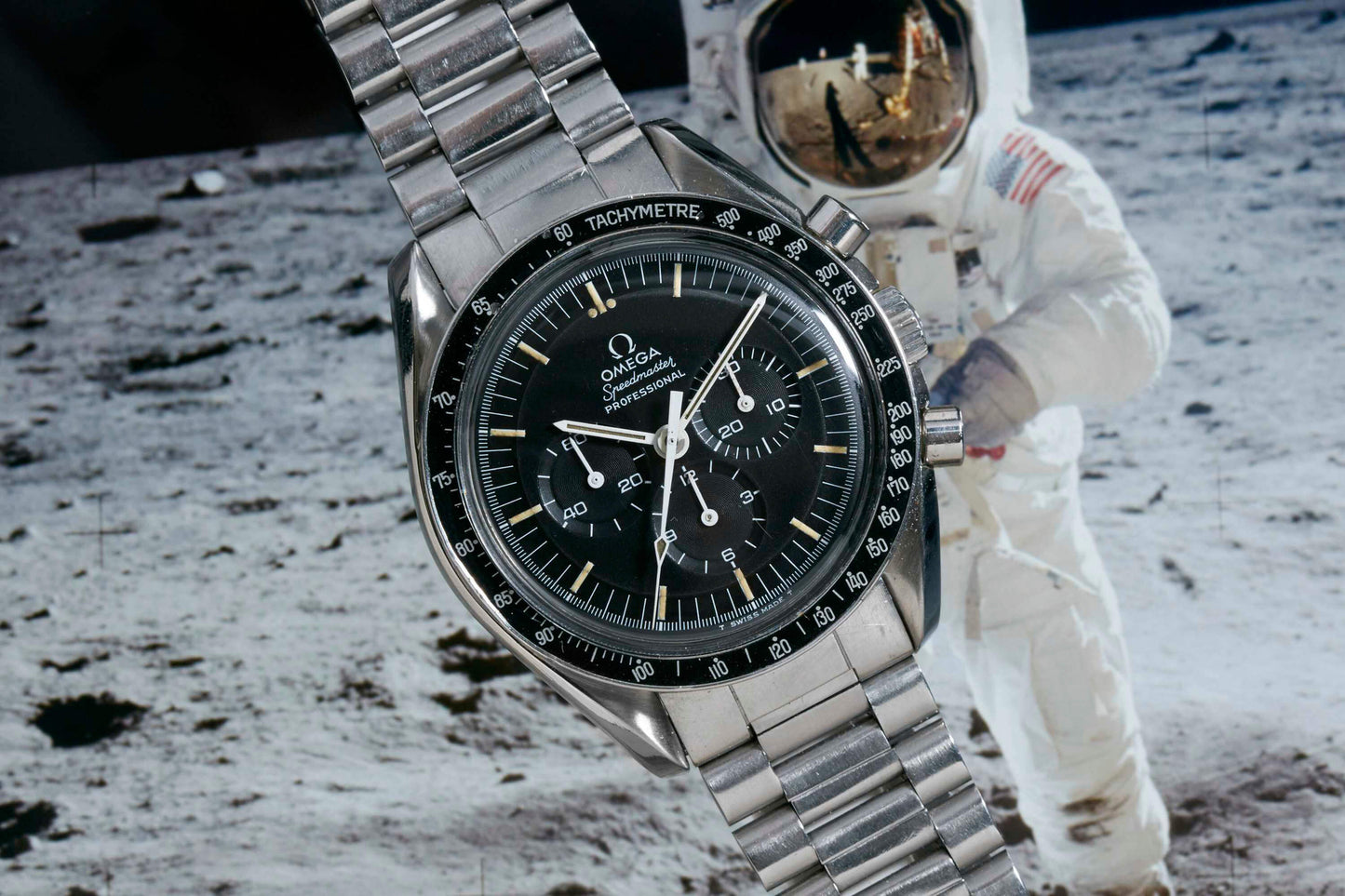
The Omega Speedmaster, affectionately nicknamed the “Moonwatch,” is more than just a timepiece. It’s a cultural icon, a symbol of human achievement, innovation and durability. Here are some captivating facts about this legendary watch:

In 1965, after rigorous testing, the Speedmaster became the official chronograph for NASA astronauts. It underwent extreme temperature tests, shock tests, and even simulated vacuum environments, proving its ability to withstand the harsh lunar conditions.

On July 21, 1969, Buzz Aldrin became the first person to wear a wristwatch on the Moon, with his trusty Speedmaster strapped to his spacesuit. Neil Armstrong left his Speedmaster in the Lunar Module as a backup timing device, making it the only watch on the lunar surface during humanity’s first moonwalk.

During the Apollo 13 mission, when the spacecraft’s main navigation system failed, the Omega Speedmaster played a crucial role. Astronauts used it to time a critical engine burn, enabling them to safely return to Earth. This event cemented the Moonwatch’s place as a life-saving tool.

The Speedmaster has been worn by numerous astronauts on all six lunar landing missions, and remains the official watch of NASA astronauts today. It’s also been a favorite among cosmonauts, scientists, and adventurers, including Buzz Aldrin who proudly wore his original Moonwatch on a 2016 return to space at the age of 86.

Despite modern advancements, Omega continues to produce the “Professional” model, staying true to the original design. Its popularity extends beyond astronauts, with numerous special editions and collaborations attracting watch enthusiasts and collectors worldwide.
The Omega Speedmaster Moonwatch is a testament to human ambition, and the enduring spirit of exploration. It’s a reminder that even small objects can carry stories of courage, innovation, and giant leaps for mankind.
اشترك في آخر أخبار الساعة
Welcome to popups plugin